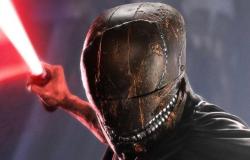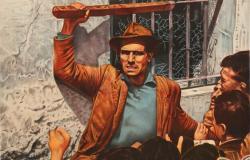Photo: courtesy Guillermo Monsanto
The exhibition of Pepo Toledo in the exhibition hall of the National Museum of Guatemala reveals the conceptual values that underpin the artist’s collection. In each room you can perceive the capacity for abstraction and the dialogue developed in the stages that have passed since the beginning of his career.
His painting is clean and is based on a peculiar palette whose mastery highlights a suggestive reading in each figuration; Whether it is realistic or not. This result, if we delve into the origins of his interest in art, comes from a keen eye and the way in which he early delved into the study of the discipline. He has also created two-dimensionally from engraving and drawing. It seems, it must be noted, that his imprint has European airs.
In 2008 he produced a three-dimensional work that preceded the first Peligrosa Sculptures series.
In 2008 he produced a three-dimensional work that preceded the first Peligrosa Sculptures series. Set in which his interest in the zoological universe stands out and, incidentally, he proposes species that can be understood as primitive such as cephalopods or bullfighting themes that, in turn, also serve as a model for other oil works.
In constant evolution and in a continuous exercise of synthesis, Toledo has developed other figurations that have also become public works inside and outside Guatemala. Iconography whose synthetic nature develops themes supported by critical thoughts. Among them, his Angels of Peace and that call for attention to the order of progressive political ideas stand out.
Utopian cities and urban forests have geometric essences whose general tendency is the propensity to grow exponentially. In this way, sculptures that are presented as domestic are intended to be perceived as small models whose final destination is to grow proportionally to the space they occupy. Despite what has been pointed out, they are not installations, although more than one curator could perceive them this way.
It is in this future that he became interested in digital graphics and the possibilities it offers regarding architectural integration. Hence, from the two-dimensional it passes again to the sculptural bulk. The dynamics of the vanishing points become more visible in the resulting works and with this he manages to represent his understanding of the infinite.
But Toledo always returns to the original and with this it expands on the universe of the Pepoglyphs and its search for the origin. More than symbolic, he would think that what he does is based on spirituality, the understanding of the supreme and, from there, comes his need to find a plastic message in the beginning of humanity.
I fall short, Pepo Toledo is a philosopher and art scholar. His legacy has foundations that go beyond the search for forms per se. He is an artist in constant training and transformation. The severity of criticism and the elaboration of values strengthened from knowledge weigh in its creation.







